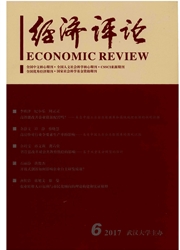

 中文摘要:
中文摘要:
本文通过构建一个产业结构变迁模型,数理演绎了政府税收、研发补贴与产业结构变迁之间的耦合过程。借助数值方法模拟不同政府税收和研发补贴情况下的产业结构变化。数值结果发现,降低政府税收和增加研发补贴不仅加快产业结构变迁,还可以提高经济增长率。在改善产业结构方面.降低政府税收要比增加研发补贴效果更明显,若同时采取两种政策,可以大大缩短产业结构变迁时间。为进一步检验数值结论,本文选取2003—2013年中国省际面板数据进行实证分析。结果表明,研发补贴与第二产业税收对产业结构变迁的影响与数值结论相同.但是降低第三产业税收反而抑制产业结构变迁。
 英文摘要:
英文摘要:
This paper tries to construct a model of industrial structure change, and discusses the effect of government taxes and R&D subsidy on industrial structure change, and simulates the process of industrial structure change under different government taxes and R&D subsidy by using numerical method. The results show that reducing government taxes or increasing R&D subsidy not only accelerates the change of industrial structure, but also can improve the economic growth rate. Reducing government taxes has a more obvious effect than increasing R&D subsidy in improving the industrial structure. If we adopt two kinds of policies at the same time, it can shorten the time of industrial structure change greatly. In order to further test the numerical results, this paper selects 2003-2013 China Provincial Panel Data for empirical analysis. It shows that the impact of R&D subsidy and second industry tax on the industrial structure change is the same as the numerical results, but the third industry tax shows a positive effect on the industrial structure change.
 同期刊论文项目
同期刊论文项目
 同项目期刊论文
同项目期刊论文
 期刊信息
期刊信息
